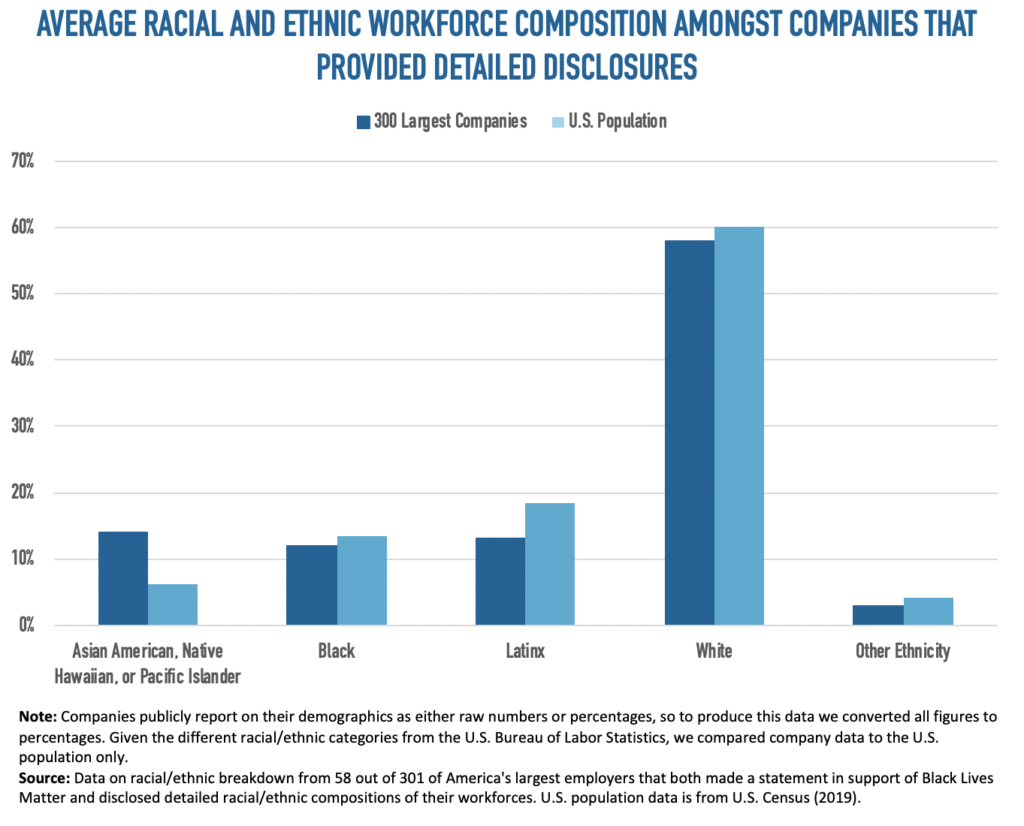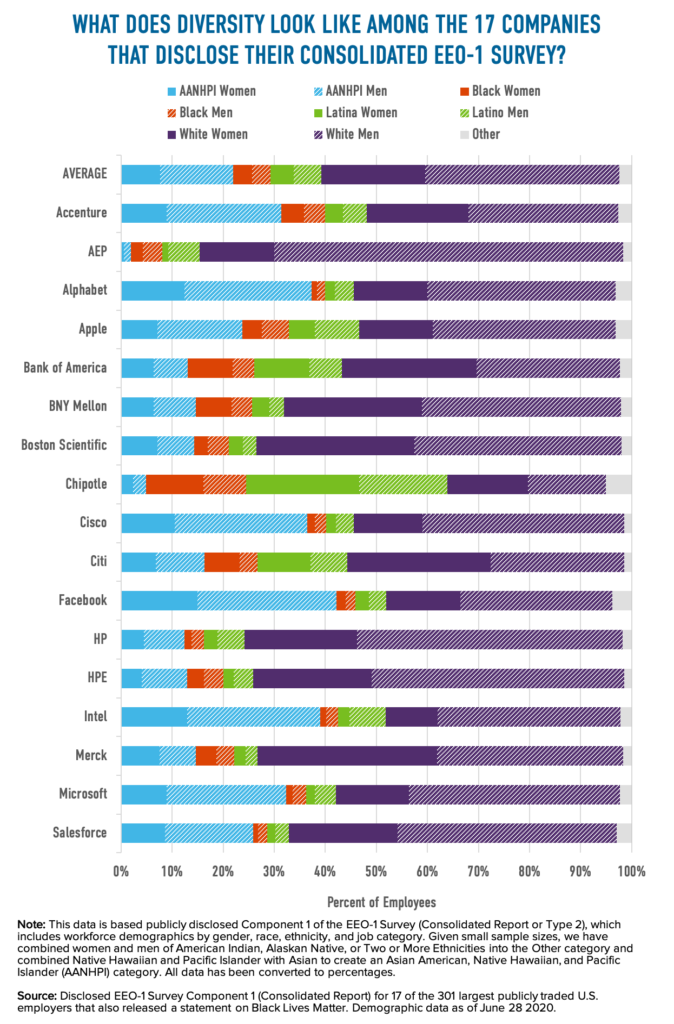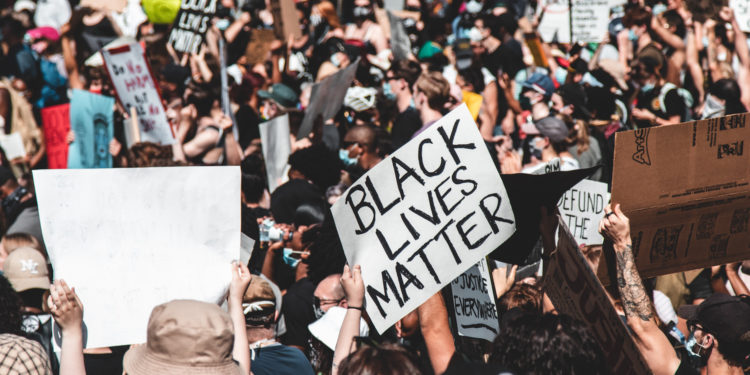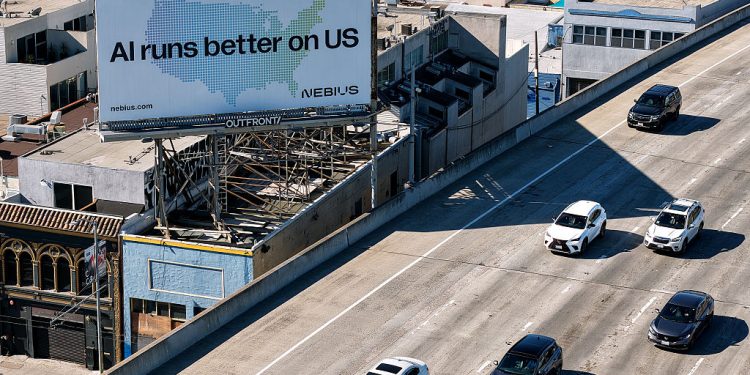What Does Representation Look Like for Black and Brown Employees at 17 of America’s Largest Employers?
Another week of nationwide, even global, protests for racial equity – spurred by the police killing of Black and Brown men and women including Elijah McClain, George Floyd, Breonna Taylor, and Rayshard Brooks – has propelled commitments to antiracist action among institutions across the country. This moment of systems upheaval has opened the eyes of many Americans to issues of inequity and violence that are not new, but are being held under a new microscope. As government agencies, businesses, investors, and nonprofits alike continue to reckon with next steps – including NYC Comptroller Scott Stringer who called on 67 companies this week to release their workforce demographics – we’re unpacking how America’s largest corporations have responded in support of Black Lives Matter and their Black employees.
Earlier this month, we looked at which companies among America’s 300 largest employers made a statement in support of the Black Lives Matter movement and whether those companies have disclosed a breakdown of the racial and ethnic composition of their workforces. We found that 59 of the 199 companies that had released a Black Lives Matter statement had disclosed enough detail to show how many employees identify as Asian, Black, Latinx, or White, and just 17 of these companies had disclosed information that would typically be found in an EEO-1 Survey, the most detailed format of demographic disclosure.
We applaud these companies for their transparency. Disclosure from companies on their demographic diversity represents a critical first step on the journey to addressing workplace inequities.
When we look at the breakdown of the demographics at these companies, we see that, in aggregate, they largely match the demographics of the overall U.S. population – but when we look more closely by company and industry, we see that some demographics are more highly concentrated in certain sectors than others, while others – like Black workers – are significantly underrepresented.
Demographic Data in Aggregate

In looking across all 59 companies that disclosed sufficient details on demographics, we compared workforce breakdowns to the overall distribution of the U.S. population and found that workforce representation overall included:*
- 14% Asian American, Native Hawaiian, or Pacific Islander (6.2% U.S.)
- 12% Black (13.4% U.S.)
- 13% Latinx (18.5% U.S.)
- 58% White (60.1% U.S.)
- 3% Other Ethnicity (4.1% U.S.)
Representation of White and Black workers, along with those identifying as “Other Ethnicity,” largely match that of the U.S. population, while Asian Americans are overrepresented (14% vs. 6.2%) and Latinx employees are underrepresented (13% vs. 18.5%). But when we look at each company, we find an even more nuanced picture of Black and Brown underrepresentation at some of America’s largest employers:
Company-Level Demographic Data

By looking at the intersection of race, ethnicity, and gender at these 17 companies, we find that on average, 17% of workers identify as Black or Latinx and 36% of workers identify as women. While on net this demonstrates underrepresentation of these groups, the situation is even starker among Technology companies, which are most likely to disclose their EEO-1 Surveys.
Nine out of the 17 companies that both released a Black Lives Matter statement and disclosed an EEO-1 Survey are classified as part of the Tech sector. At these nine Tech companies, just 12% of workers identify as Black or Latinx and 30% identify as women. When examining Black diversity at these employers in particular, it is clear that both men and women are chronically underrepresented, with Black men on average making up 2.7% of the workforce and Black women making up just 1.8%.
Though these breakdowns of detailed racial and ethnic data highlight critical disparities in Black and Brown representation among America’s largest employers, it also provides a clear benchmark from which progress can be measured. And as companies increase their internal and external commitments to racial equity, disclosing racial and ethnic demographic data – especially that are available in an EEO-1 Survey – acknowledges the inequities that exist and anchors any commitment to build a more diverse workforce.
But disclosing racial and ethnic demographic information and EEO-1 Survey data is just a first step in understanding inequities in the workplace. There is much more to be done for companies to understand their current performance. For instance, evaluating differences in pay by gender, race, and ethnicity by job category or analyzing discrepancies in hiring, promotion, and retention rates by minority groups can help uncover how other dimensions of racial inequity impact Black and Brown workers. In addition to this work, all companies must consider how systemic racism plays a fundamental role in the structures of our daily lives, our relationships, and the economy, and work to build antiracist structures at every level of their business. We unpack many of these steps in our list of specific actions companies can take to support Black colleagues.
While this week we’ve focused on the companies that have disclosed detailed racial and ethnic demographic breakdowns for their workforces, there are a number of companies among America’s 300 largest employers that have made no disclosure at all. In order to address systemic inequity and racism in the workplace, we encourage companies to increase transparency to expose areas for improvement. In unison with NYC Comptroller Scott Stringer’s call for corporate action, we urge these companies to publish their current workforce demographic breakdowns, specifically EEO-1 Surveys. By building a deeper and more open understanding of where corporations currently stand in the movement for racial equity, we can create more equitable workplaces.
*Note: The data in this piece was last updated on June 28, 2020.





